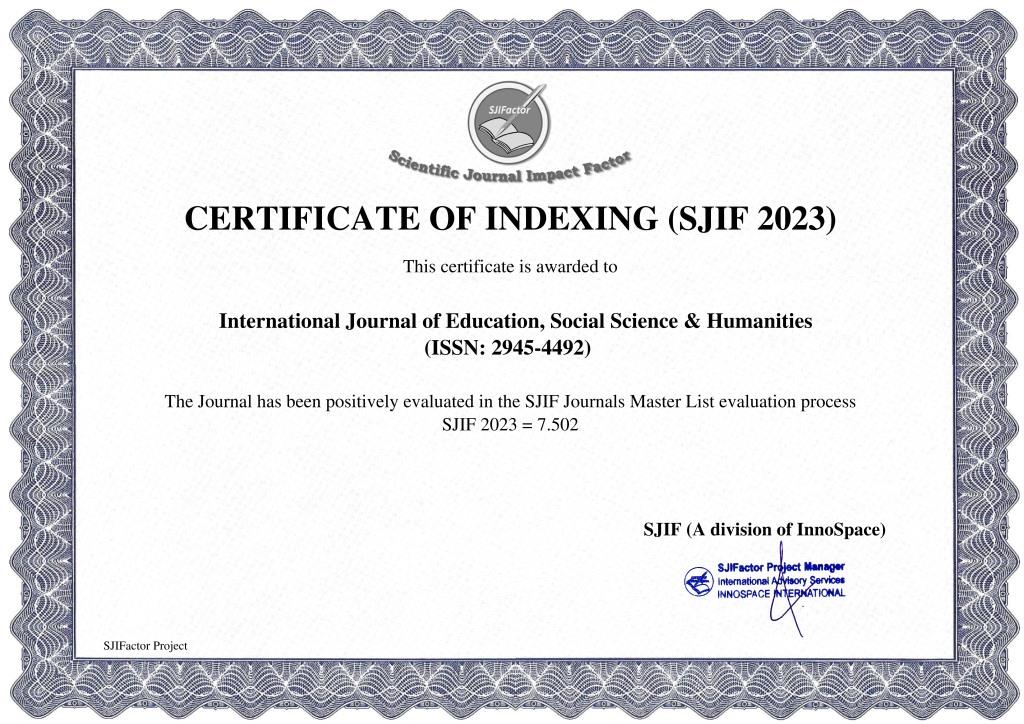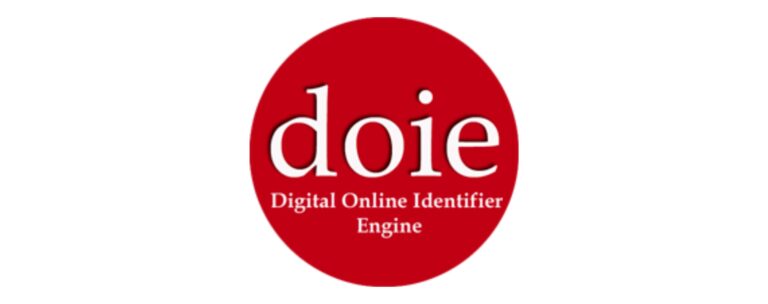MOLECULAR GENETIC AND CLINICAL VARIANTS OF MODY2 AND MODY3 IN CHILDREN IN UZBEKISTAN
Keywords:
diabetes mellitus, MODY2, MODY3, C –peptide, insulin, manifestation, remission, hyperinsulinemic, normoglycemicAbstract
For a long time, it was believed that only type 1 diabetes mellitus (DM1) was characteristic of childhood. However, it is now known that other types of diabetes occur in childhood and adolescence, among which the most common are type 2 diabetes (T2DM), as well as monogenic forms of diabetes, which include MODY (maturityonset diabetes of the young - adult diabetes type in young people), neonatal diabetes and some other forms. In most European countries, T1DM accounts for more than 90% of diabetes cases in childhood and adolescence, with incidence ranging from 0.1 to 57.6 per 100,000 children [1]; in the Republic Uzbekistan it is 12.43 per 100,000 children [2]. T2DM and monogenic forms of diabetes are much less common. The prevalence of monogenic diabetes in the UK is 10.8:100,000 [3]. Recent independent studies have shown that in children and adolescents. The increasing frequency of monogenic forms of diabetes is 1.1–4.2% of all forms of diabetes, the prevalence in the population is 2.1–4.6:100,000 [4–6]. To date, 13 genes are known that lead to the development of MODY. The most common forms of this pathology are MODY2 and MODY3, which are caused by mutations in the genesGCKAndHNF1αrespectively. The “gold standard” for diagnosing MODY is the identification of mutations through molecular genetic testing. At the stage of clinical examination, it is important to suspect this form of diabetes based on the characteristics of the disease in order to refer the patient for a molecular genetic study. The clinical course may not fit into the classical characteristics of this form of diabetes; only 50% of patients with genetically confirmed MODY have a course of the disease that meets its classical criteria [3]. It remains relevant to study the variability of the clinical course and laboratory characteristics of MODY, primarily its most common subtypes - MODY2 and MODY3.
References
Ismoilov JA, Egamberdiyeva YK kizi, Mahmamuradova NN, Daminov AT. PRETIBIAL MYXEDEMA: PATHOGENETIC FEATURES AND CLINICAL ASPECTS. Educational Research in Universal Sciences. 2024;3(4 SPECIAL):695-702.
Шухратовна СД, Рустамовна РГ, Нодир Р. Изменения уровня хг в системе мать-плацента-плод при резус несовместимой беременности. Достижения науки и образования. 2020;(10 (64)):91-93.
Takhirovich DA, Zafarovna KM, Isroilovna IS. NEVROLOGIYADA ENDOKRIN O`ZGARISHLAR. SO‘NGI ILMIY TADQIQOTLAR NAZARIYASI. 2023;6(12):417-422.
Xoldorov X, Omonov F, Jumayev I, Daminov AT. TYPE 1 DIABETES AS A RISK FACTOR FOR BONE HEALTH IN CHILDHOOD. Results of National Scientific Research International Journal. 2023;2(8):131-135.
Daminov AT, Xurramova S, Islomov A, Ulashev M, Ikramov R, Mirzakhakimov P. Type 2 diabetes and bone mineral density in postmenopausal women. Science and Education. 2023;4(11).
Berkinov A, Safarov F, Tursunova S, Daminov AT. VITAMIN D STATUS IN SENIOR RESIDENTS OF SAMARKAND REGION. Results of National Scientific Research International Journal. 2023;2(8):136-140.
Taxirovich DA, N SY, I IM, Z SM. VITAMIN-D YETISHMOVCHILIGINING QANDLI DIABET 1-TIP RIVOJLANISHIGA TA’SIRI. Gospodarka i Innowacje. 2023;34:74-77.
Ismoilov JA, Egamberdiyeva YK kizi, Mahmamuradova NN, Daminov AT. TIME-RESTRICTED NUTRITION AS A NEW STRATEGY FOR THE THERAPY OF OBESITY AND COMORBID CONDITIONS. Educational Research in Universal Sciences. 2024;3(4 SPECIAL):660-667.
Ulugbekovna NP, Bakhtiyorovna RI, Almosovich RA, Takhirovich DA. Thyroid Diseases during Pregnancy and their Impact on Maternal and Fetal Outcomes. American Journal of Pediatric Medicine and Health Sciences (2993-2149). 2023;1(8):188-190.
Хамидова МН, Исматова ИФ, Бердиеров ЖШ, Негматова ГШ, Даминов АТ. САХАРНЫЙ ДИАБЕТ И COVID-19. Eurasian Journal of Medical and Natural Sciences. 2022;2(13):190-204.
Shukhratovna NG, Erkinovna SD, Oʻgʻli IBI, Qizi ADD. THE ROLE OF GASTROINTESTINAL HORMONES IN THE PATHOLOGY OF THE DIGESTIVE SYSTEM. PEDAGOG. 2022;5(6):408-412.
Salimova DE, Daminnov AT. A CLINICAL CASE BASED ON THE EXPERIENCE OF TREATING HYPERTENSION IN A PATIENT WITH TYPE 2 DIABETES MELLITUS, OBESITY AND VITAMIN D DEFICIENCY. Educational Research in Universal Sciences. 2023;2(12):150-154.
Takhirovich DA. ASSESSMENT OF HEARING FUNCTION IN INDIVIDUALS WITH TYPE 2 DIABETES. American Journal of Pediatric Medicine and Health Sciences (2993-2149). 2023;1(9):124-126.
Qahramonov FA, Amirov BY, Tursunboyeva LI, Daminov AT. Autoimmun tireoidit bilan kasallangan bemorlardagi funksional buzilishlarning differensional diagnostikasida qalqonsimon bez zichligini aniqlash. Science and Education. 2023;4(3):82-86.
Nazira K, Siddikovna TG, Davranovna DA, Takhirovich DA, Tulkinovich OS. Cardiovascular complications in patients who have had covid on the background of diabetes mellitus 2. 1. 2021;2(3):37-41.
Choriyev S, Gadoeva Z, Mardonova F, Jurakulov F, Hafizov S, Daminov AT. Changes in the thyroid gland in the long period after a new coronavirus infection. Science and Education. 2023;4(12):102-106.
Kamalov T, Bahriev N, Yuldashev U, Sabirova D. CLINICAL AND HORMONAL CHARACTERISTICS OF PRIMARY HYPOGONADISM IN PRESCHOOL BOYS. MedFarm. 2019;10(9). doi:10.32743/2658-4093.2019.9.10.188
Daminov AT, Yuldoshev B, Murodullo I, Naimova N. CLINICAL CASE OF PRIMARY HYPOTHYROIDSIS. Educational Research in Universal Sciences. 2024;3(3 SPECIAL):135-138.
Daminov AT, Norkulov A, Turamudov R, Zayniddinova D. CLINICAL OBSERVATION OF SEVERE ITSENKO-CUSHING DISEASE. Educational Research in Universal Sciences. 2024;3(4 SPECIAL):549-556.
Daminov A, Khaydarov O, Hasanova M, Abdukakhorova R. COMPLICATIONS OF GLUCOCORTICOID THERAPY IN PATIENTS DIABETES SURVIVED COVID-19. Евразийский журнал медицинских и естественных наук. 2023;3(4):197-200.
Takhirovich DA, Corners SJA, Shukhratovna NG, Shukhratovna SG, Zaynuddinovna MG. COURSE OF COVID-19 IN PATIENTS WITH DIABETES MELLITUS. Web of Scientist: International Scientific Research Journal. 2022;3(02):73-76. doi:10.17605/OSF.IO/B6FU2
Shukhratovna NG, Erkinovna SD, Suxrobovna XM, Ikromovna AZ. DIABETES MELLITUS, ISCHEMIC HEART DISEASE AND ARTERIAL HYPERTENSION. PEDAGOG. 2022;5(5):381-386.
Taxirovich DA, J T, O E, I A. QANDLI DIABET-2 TIPI BOR BEMORLARDA COVID-19 KASALLIGINI GLUKOKORTIKOIDLAR BILAN DAVOLASH DINAMIKASINI BAHOLASH. Gospodarka i Innowacje. 2023;34:78-81.
Negmatova GS, Toshimova GT qizi, Abdiyev LS oʻgʻli, Daminov AT. EFFECTIVENESS OF CORRECTION OF DYSLIPIDEMIA IN ELDERLY PATIENTS WITH TYPE 2 DIABETES MELLITUS. Educational Research in Universal Sciences. 2024;3(1 SPECIAL):269-274.
Negmatova GS, Salimova DE. Qandli diabet 2-tipning arterial gipertenziya bilan birgalikda kechish xususiyatlari va ularni davolash usullari. Science and Education. 2023;4(2):516-519.
Sobirjonovna KN. FACTORS DETERMINING THE CLINICAL SIGNIFICANCE OF DEPIPTIDYL PEPTIDASE 4 INHIBITORS IN THE TREATMENT OF PATIENTS WITH TYPE 2 DIABETES MELLITUS. World Bulletin of Public Health. 2022;8:67-72.
Ismoilov JA, Egamberdiyeva YK kizi, Mahmamuradova NN, Daminov AT. FAMILY FORM OF NEPHROGENIC X-LINKED DIABETES INSUPLIUS. Educational Research in Universal Sciences. 2024;3(4 SPECIAL):703-710.
Daminov AT, Djabbarova D, Abduvohidova N, Furkatova D, Farxodova S, Ibragimova P. Features of bone tissue remodeling in patients with type 2 diabetes mellitus. Science and Education. 2023;4(11).
Daminov Abdurasul Takhirovich RSU. FEATURES OF THE CLINIC, REHABILITATION, TREATMENT OF AUTOIMMUNE THYROIDITIS IN THE CONDITIONS OF THE IODINE-DEFICIENCY REGION. Published online April 12, 2023. doi:10.5281/ZENODO.7820412
Shuhratovna NG, Shukhratovna SD. Features of the course of autoimmune hepatitis in children as a variant of autoimmune polyglandular syndrome. Asia Journ of Multidimensi Resear (AJMR). 2020;9(7):89. doi:10.5958/2278-4853.2020.00228.1
Daminov AT, Sa’dullayeva SM qizi, Ismoilova SI qizi. SAMARQAND VILOYATIDA QANDLI DIABET ASORATLARI UCHRASH CHASTOTASI. Educational Research in Universal Sciences. 2024;3(3 SPECIAL):139-142.
Negmatova GS, Xakimova GD qizi, Abdiyev LS oʻgʻli, Daminov AT. FEATURES OF THE RULES FOR INSULIN INJECTION TECHNIQUES IN ELDERLY AND SENILE PATIENTS WITH DIABETES MELLITUS. Educational Research in Universal Sciences. 2024;3(1 SPECIAL):259-264.
G.Sh N, D.e S, Alisherovich BA, Erkin R is the son of S, Bektash U is the son of S. RELATIONSHIP BETWEEN DIABETIC NEPHROPATHY AND CARDIAC DISORDERS IN PATIENTS WITH TYPE 2 DIABETES. PEDAGOG. 2022;5(5):337-340.
Ismoilov JA, Egamberdiyeva YK kizi, Mahmamuradova NN, Daminov AT. FEATURES OF VITAMIN-D METABOLISM IN PATIENTS WITH DIABETIC NEPHROPATHY. Educational Research in Universal Sciences. 2024;3(4 SPECIAL):681-689.
Xudoyorov S, Mirkomilova M, Burxonov U, Sayfieva G, Sheralieva N, Daminov AT. Fourniers gangrene in modern conditions. Science and Education. 2023;4(12):107-117.
Alimovna KN, Sobirjanovna KN, Abdurasul D, Tulkinovich OS. GROWTH HORMONE FOR THE TREATMENT OF HEREDITARY DISEASES IN CHILDREN. 10.
Sabirjanovna KN, Takhirovich DA, Jahongir D, Najmiddin X, Samandar G, Mehrangiz X. Negative Impact of Covid-19 on the Endocrine System. American Journal of Pediatric Medicine and Health Sciences (2993-2149). 2023;1(8):148-153.
Ismoilova SI. Impact of vitamin D deficiency on the risk of developing type 1 diabetes. Science and Education. 2023;4(3).














